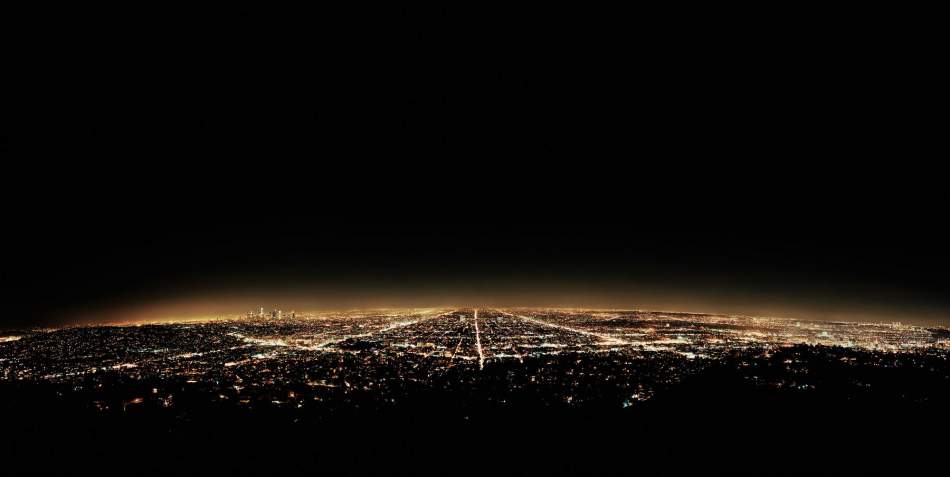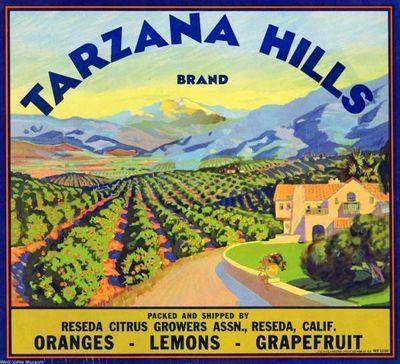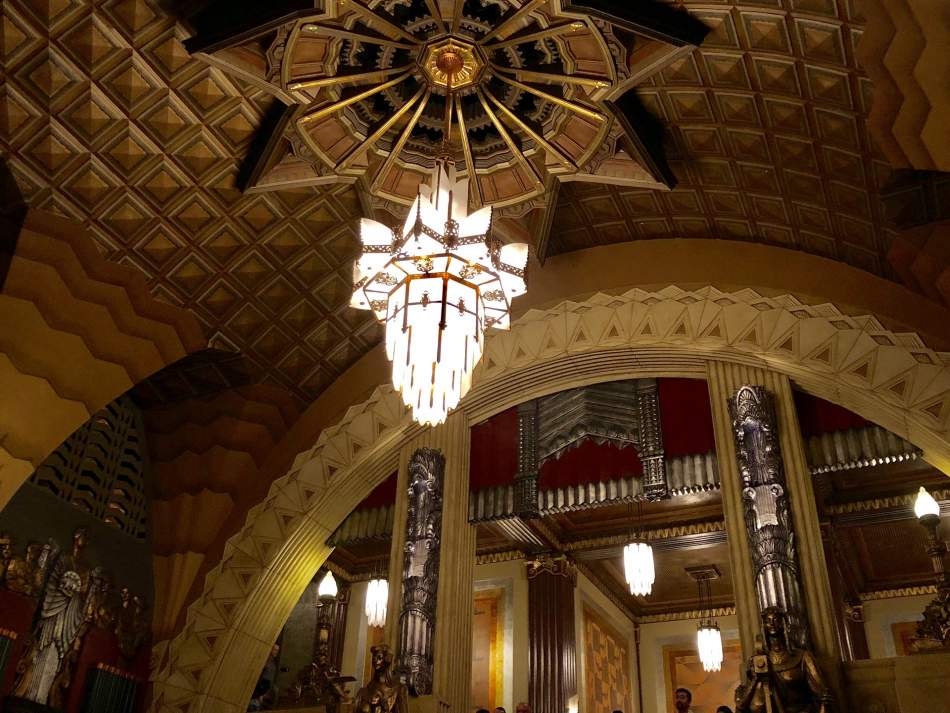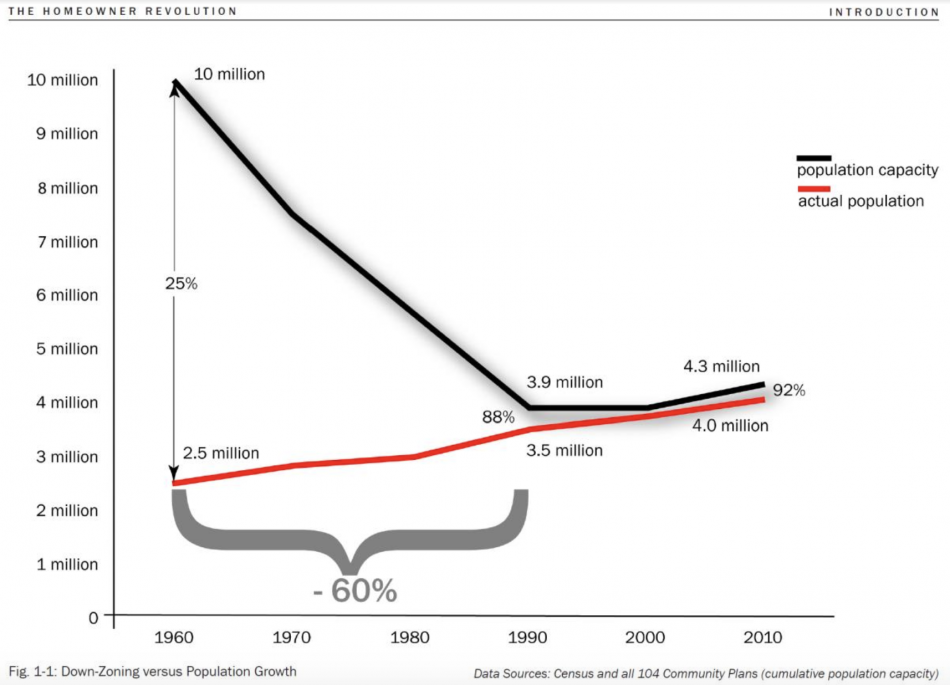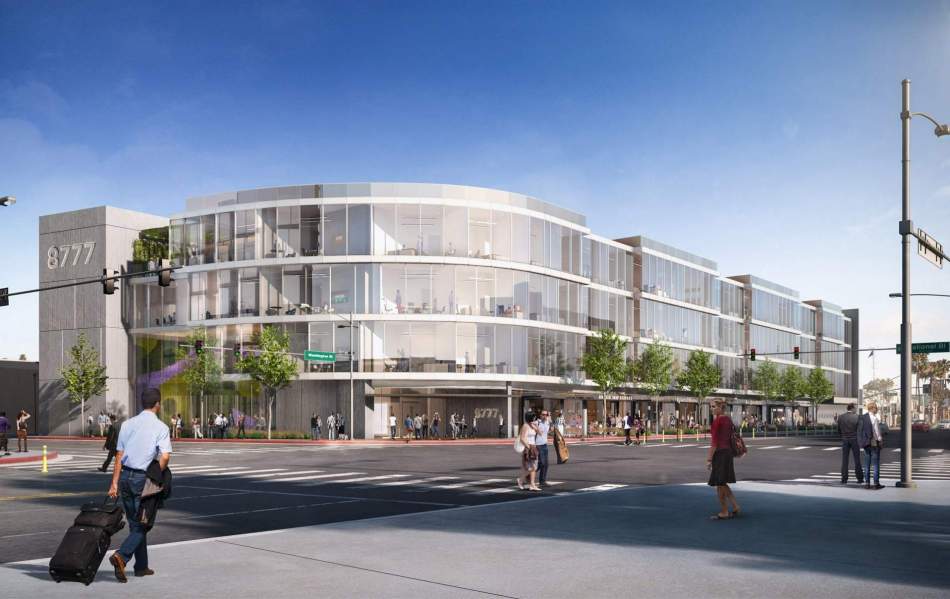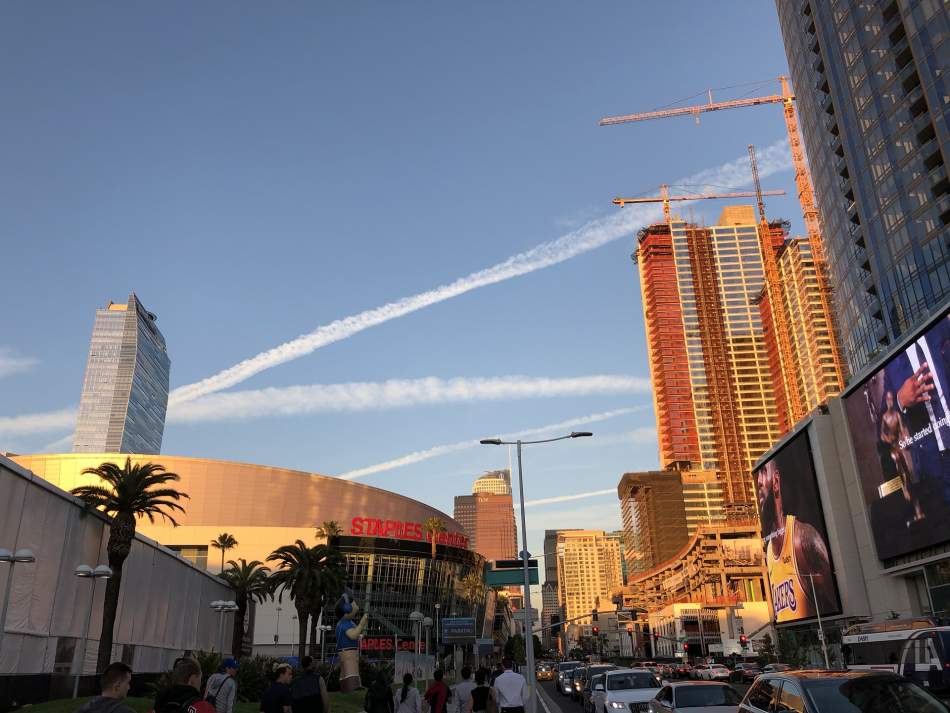Note from the Author: At the dawn of the New Year, many people take the time to reflect on what has transpired in recent memory, and what can be done differently over the year to come. This article adopts a similar approach in honor of the New Year, and lays out a resolution for how Los Angeles can change its mentality to adapt to a new era.
Look upon Los Angeles from above and its scale is almost incomprehensible. The amount of effort that went into creating the city is difficult to imagine. For every one of the 3 million buildings in LA County, someone acquired the land, went through a government approvals process, hired architects and engineers and construction workers, and connected the project to public infrastructure. To achieve what has been built required the division of this labor amongst many thousands of individual actors. During the times when LA was experiencing its most rapid growth, which were not coincidentally times when it was the city was most affordable to newcomers and current residents, the process of carrying out those efforts was reasonably straightforward. But the city we built in the past could not be built today.
Today, we agonize over every building or infrastructure project that is built in LA. From a regulatory standpoint, someone who wants to build here needs to jump through several hoops, from building codes, to city planning approvals, to design review, to environmental clearance, and then of course the legal challenges and appeals to all of the above. But I contend that this is the symptom of the problem, rather than the underlying cause. For most of LA’s history, it had been a pro-growth sort of place. But this changed fundamentally in the late 20th century, particularly in the 1970s and ‘80s. The burdensome regulatory climate is ultimately a product of public attitudes.
Some of the resistance to growth that emerged in the late 20th century was healthy, as I see it, yet I would argue that as a city we have overreacted to the harms of growth and that this overreaction is harming us today as we enter a new phase of the city’s history. This article will describe early enthusiasm about growth in LA, examine what changed people’s attitudes, and explore how LA can renew its enthusiasm for the novel while addressing some of the concerns that led to its current state of mental stagnancy.
Growth and its Discontents
For much of its history, Los Angeles functioned as the quintessential American boomtown. With a County population of about 100,000 in 1890, it quintupled to about 500,000 by 1910, and by 1940 its population was almost 3 million.
Throughout this period, perhaps nothing was a bigger driver of growth in LA than its own boosterism. Media and commercial interests in the city were relentless in their push to promote the sunny Southern California lifestyle to the shivery Americans east of the Rocky Mountains. Many of their claims about life in the region were exaggerations or outright falsehoods, and many of their self-serving business practices would not pass modern ethical scrutiny, but nonetheless they did succeed in populating the region.
Los Angeles was relatively devoid of economic opportunities during the first couple decades of the 20th century, despite the assertions of the region’s boosters. From the 1920s on, however, the region did develop legitimate economic engines. Entertainment is the most famous, of course, though the oil industry was more substantial in dollar terms at the time.
By the time WWII came around in the 1940s, Los Angeles had a growing manufacturing and shipping industry, which the war only kicked into overdrive. In the years after the war, LA experienced even more drastic growth as it became the center of the Cold War aerospace industry, and as former GIs who had passed through California en route to the war in the Pacific chose to settle there over the years that followed. While there were a bit over 3 million people in LA County at the end of WWII in 1945, by 1960 the population was over 6 million, and by 1990 is was 9 million.
To accommodate this extremely rapid growth, whenever LA’s population boomed its building stock boomed as well. The vast majority of buildings in Los Angeles were constructed during its two largest boom periods, in the 1920s or in the 1950s-80s (see the built:LA tool for an interesting visualization). Throughout these times, there was widespread enthusiasm for growth in LA and the opportunities it brought for a brighter future.
The architectural styles of those eras reflect that optimism. The Art Deco of the 1920s trumpeted the triumph of industry, while mid-century modernism reflected confidence in a more scientific future of plenty – the space-age 1961 Theme Building at LAX, for example, serving as a fitting ambassador for the aerospace-oriented city of that era.
Yet, from the 1990s to the present day, development in Los Angeles has experienced a steep decline. Even today, with cranes dotting the Downtown skyline, we are at a historic low in terms of housing construction – ⅓ of all new housing units in the City of LA since 2000 have been built in Downtown, with relatively little constructed elsewhere.
Running parallel to the above-stated story of LA’s growth periods is a related story: the growth of LA’s anti-growth movement. Early rumblings against growth began to be felt in hillside areas in the 1940s and ‘50s, where residents felt that lots of new neighbors would disturb their desired isolation and threaten the geology of the hillsides. The anti-growth movement descended from the hills in the 1960s and ‘70s, as a more ecologically sensitive public identified overdevelopment as a threat to the environment. The landmark California Environmental Quality Act (CEQA), which places strict review requirements and legal vulnerability on projects across the state, was passed in 1970.
By the late 1970s and the 1980s, anti-growth sentiment became more widespread as concerns grew over the impact of greater density on traffic and parking, issues that affected almost all middle-class Angelenos. Through the 1980s the City of LA and other municipalities implemented drastic down-zonings. As the figure below shows, taken from Greg Morrow’s expansive doctoral dissertation “The Homeowner Revolution”, housing capacity per local zoning in LA was 10 million in 1960, but had been reduced to 3.9 million by 1990.
The effects of these anti-growth measures were drastic. As the California Planning & Development Report editor Josh Stephens put it, by reducing zoning capacity from 10 million to 4 million, “6 million men, women, and children were zoned, voted, and legislated off the island.”
But perhaps some of these anti-growth measures had a degree of justification, given certain conditions of the time. If you take for granted that LA should be a place where people rely on their cars to get everywhere, for instance, growth rapidly becomes a problem. An auto-oriented environment has tight restrictions on how much density it can handle before congestion and lack of parking availability render it difficult to use. And much of LA’s growth in the 1950s-80s was concentrated in its particularly auto-oriented suburbs, entailing those car-related problems and also the degradation of previously unspoilt natural areas. I will elaborate below on why today’s growth need not cause the same problems, but by the time we had reached today’s housing crisis, the mentality of many in the region had congealed into one of stasis.
Settling into Stasis
Today’s housing prices in LA are so high because supply has stayed relatively constant while demand has grown dramatically. The seeds of the current housing crisis were sown in the 1970s and ‘80s, but we are not experiencing its worst effects until the present era due to a set of circumstances that masked the problem for a couple of decades.
The anti-growth sentiment that emerged in the late 20th century, cemented into law by the close of the 1980s, effectively halted rapid growth in LA at that time, yet we are not experiencing the worst effects of that stoppage until the present day. Due to unrelated circumstances, LA’s economic base took a serious hit in the early 1990s as the aerospace industry shrunk at the end of the Cold War, from which the local economy is only more recently recovering. At the same time, overly accessible capital in the 1980s led to excessive building during that period. This created an environment where demand for real estate was artificially low, while supply was artificially high, depressing prices.
Years of relatively slow growth through the ‘90s and 2000s meant that absorption of the excess supply of the ‘80s proceeded slower than usual. With a relatively weak economy, renters and homeowners in LA did not have as much money in their pockets to bid up housing prices. The oversupply of building stock from the 1980s created slack in the market that took a long time to reel in. This combination of forces kept housing prices at bay for a while.
Eventually, however, demand caught up to supply. Economic growth in LA has picked up as the city has found new industries and expanded old ones. Most of the growth industries in today’s LA reward very skilled workers with high salaries, while lower-skilled, lower-wage industries have faltered in the city over recent decades. This has led to a sorting effect, identified in an October 2018 study by the economist Issi Romem, where higher earners are moving to Los Angeles while lower earners are leaving it.
There are more people with more money in LA today, but the store of housing has remained relatively fixed, so those with more money compete for existing stock and bid the prices up, out of reach of lower earners. If enough new, high-quality housing could be built today, the need to compete over existing housing supply would be much diminished. But thus far the market has been constrained by very strict regulatory burdens, imposed in response to public desires from decades past, so it cannot meet demand.
Many people in Los Angeles have forgotten the enthusiasm growth can deliver. Within a mentality of stasis, the ills of development are emphasized, while its promise is neglected. For most of LA’s history growth and change were the constants of life. New developments brought new neighbors and new experiences. Construction projects and their inconveniences were to be accepted as part of the background of life, much in the way that people accept disruptions due to poor weather.
After a quarter century of very little construction, however, Angelenos’ mentalities have changed. Now development is thought to tarnish existing neighborhoods rather than add to their vibrancy. The disruptions of growth are thought of as irritating aberrations rather than as a normal part of life. But it is possible to ignite a passion for the new once again, if we built the right way for the future.
Building for the Future
To renew local enthusiasm for growth, growth will need to take a different form in Los Angeles. While in the past growth was mostly auto-oriented and focuses outward, to address the environmental and congestion concerns that put the brakes on growth in the late 20th century it will be necessary to pursue urban infill growth rather than suburban expansion. This style will grow the housing supply, making LA more affordable, and it will allow many Angelenos to reduce their environmental impacts and get around without much regard for traffic conditions.
Opponents of new development in LA often claim that they are preserving a treasured Los Angeles of times past. Stopping new construction does maintain the existing set of buildings in LA to be sure, but it may be more harmful in terms of preserving local character than promoting the right kind of growth would be. Under a no-growth regime, the buildings stay the same, but the stagnant supply in the face of growing demand ensures that wealthier residents outbid existing ones, so the character of such a neighborhood will change quite a bit indeed.
To preserve the LA as we know it, many of its buildings must change. Expanding the supply of housing will create more space for more Angelenos, and reduce the pressure from wealthier buyers and renters on older building stock. The urbanist Scott Beyer has performed a compelling case study analysis looking at San Francisco and Miami. Both cities have experienced rapid demand growth in recent years. While San Francisco’s response has been tepid in a manner similar to LA’s, Miami essentially built a new high-rise neighborhood (called Brickell) to contain much of the burgeoning wealth. While blue-collar minority neighborhoods such as the Mission District in SF have been famously gentrified in recent years, similarly positioned neighborhoods such as Little Havana in Miami have been largely preserved as demand was accommodated elsewhere.
Los Angeles can achieve a similar outcome, embracing growth while preserving legacy neighborhoods, by constructing for urban density in places where that typology is appropriate and can be expanded. This style of construction, pedestrian- and transit-oriented, addresses to concerns over density inherent in auto-oriented urban forms, such as congestion and parking. It is easier to add more pedestrians to a sidewalk than more cars to pavement. As alternative transit forms such as ride-sharing, autonomous vehicles, and public transit continue to grow, navigating such an urban form becomes more feasible.
Moreover, dense urban growth should allay environmental concerns about development. New buildings are replacing parking lots rather than pristine wilderness. Dense urbanism requires fewer and shorter vehicle trips. And, by expanding supply and thus affordability in LA, fewer people would need to move to Sun Belt places such as Arizona or Texas, where they would typically need to drive and use air conditioning more than they would in California.
Finally, it is difficult to inspire enthusiasm for development when so much of what is being built today is aesthetically uninspiring. Prior development booms expressed their exuberance in their architecture. This is not to say that every building needs to be a masterpiece. But the run of the mill Spanish Mission-style bungalows from the ‘20s inspire warm feelings in most Angelenos today, as do many of the Googie apartment buildings of the ‘50s and ‘60s. It is not clear what our modern defining architectural style will be, but the modular, boxy, stucco structures that are so prevalent amongst new construction projects may often do more harm than good toward the cause of growth, judging from public reactions. We need to find a new architectural style that reflects a confidence in the bright future of our city and that the general public can get behind.
Conclusion
This article has laid out a course for how the city can re-tool its approach to growth, and in so doing inspire a renewed enthusiasm on the subject. Urban infill growth, pedestrian- and transit-oriented, addresses most of the concerns raised against development in the late 20th century. This type of growth also does a better job of preserving the character of LA than a lack of growth would, as the expanded housing supply keeps LA affordable to more of its current residents. City planners have endorsed this sort of vision to some degree, but they are fighting an uphill and limited battle so long as many of these ideas are anathema to vocal constituents. Ultimately, public sentiment needs to get behind this sort of vision, and the legislation to make it possible will follow.
Jason Lopata works as a land use consultant with Craig Lawson & Co., LLC, helping real estate development projects in LA navigate the city approvals process. Jason previously spent time on the Business Team of LA Mayor Eric Garcetti. He also writes articles on globalization and urban development for Stratfor, the geopolitical analysis website. Jason received his bachelor’s degree from Stanford University and completed programs of study at the University of Oxford and at UCLA’s Anderson School of Management. While at Stanford, he founded and led the student real estate organization, and authored his senior thesis on Los Angeles development over the past 30 years.
Source: Urbanize LA

